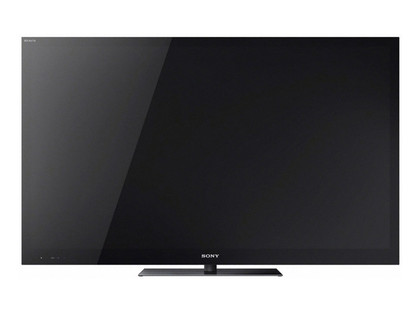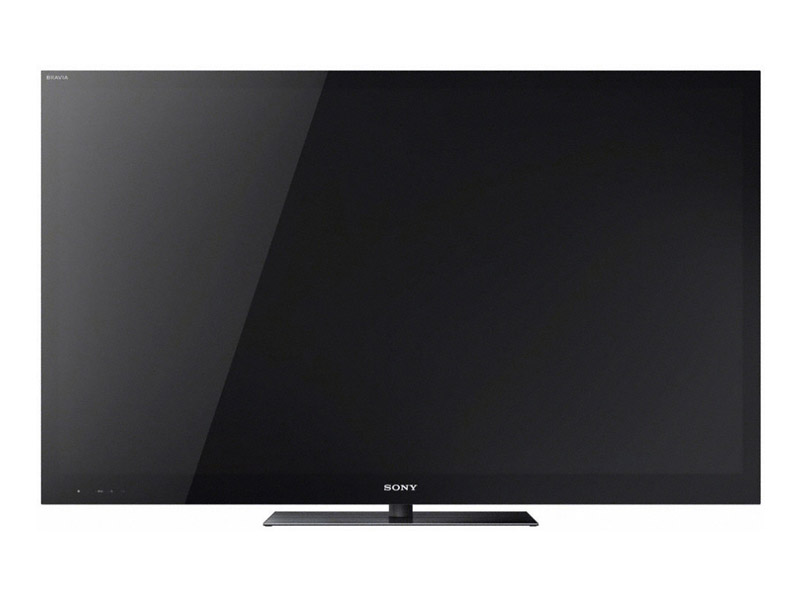Why you can trust TechRadar

For much of the time, the 46HX923's pictures are very good indeed - outstanding, even. As with previous Sony direct LED sets, for instance, the 46HX923 is capable of producing some very rich, deep black colours. Not on a par with the very best plasma TVs or Philips' recently reviewed 46PFL9706H, but a notch above anything you'll get from any of this year's edge LED TVs - even Samsung's.
The local dimming aspect to the TV's direct LED system, moreover, allows the 46HX923's deep black colours to be accompanied simultaneously - within the same frame - by very punchy colours and crisp, pure whites. In other words, there's no requirement to dim the overall brightness of the image to achieve a good black colour.
Local dimming can sometimes lead to shadow detail getting crushed out of the picture during dark scenes. But the 46HX923's brightness/contrast balance seems well judged, ensuring that even the darkest corners still contain enough low-light detail to avoid looking hollow and/or flat.
Colour
Sony's very first direct LED TVs suffered with a slightly green undertone at times. But this is not the case with the 46HX923, which instead pumps out really bright, vibrant but also natural colour tones across an impressively wide spectrum. There's almost infinite subtlety in the way colours are portrayed too, with immaculate blends and a strong sense of depth to objects and people, even when you're only watching in 2D.
Having said that the best plasma sets can produce deeper blacks than the 46HX923, it's only fair to stress that the 46HX923 can outgun plasma screens with its brightness.
Sony can generally be relied on to deliver excellent HD sharpness with its relatively high-end TVs, and the 46HX923 fits the bill perfectly. Turning off all the available motion processing reveals the set to have a pretty impressive innate response time that means there's only the faintest trace of resolution loss over moving objects.
Even so, it's good to see that the motion processing options the set offers are unusually assured in that - provided you stick with their lower 'power' settings - they are subtle in the way they work and don't throw up lots of unwanted side effects. So they're at least worth experimenting with, rather than just being better off avoided entirely as can often be the case with motion processing systems.
Standard definition
While the 46HX923 is clearly at its best with HD material, it's a more than solid standard def performer too. The X-Reality Pro engine is extremely able when it comes to adding detail to standard def sources without exaggerating noise - even when handling the often heavily compressed material you get from the Internet.
Colours are perhaps not quite as natural as they are with HD, but this isn't a big deal really, and doesn't stop standard def images from being perfectly enjoyable to watch.
There are a couple of issues to report with the 46HX923's 2D images, though: one predictable, the other weird. The predictable one is that very bright objects can exhibit a little 'haloing' when they appear against dark backgrounds. This is caused by the number of dimmable LED clusters not being numerous enough to deliver pixel-precise levels of light accuracy, and it's an issue found to some extent on all local dimming direct LED TVs.
The key point, though, is that the extent of the haloing is sufficiently limited and its brightness sufficiently low-level that it's seldom seriously distracting.
The weird issue is the appearance at the left and right edges of the screen of faint dark seams. These vertical lines appear about a cm from the screen's edges and are around half a centimetre across. Their location at the periphery of the image and their subtlety means you certainly aren't always aware of them, by any means. But they could become one of those things that you can't stop yourself looking out for.
3D performance
Turning finally to 3D, the 46HX923's extreme brightness, strong colours and rich contrast serve it well, allowing its 3D image to look dynamic and engaging even though Sony's chunky but reasonably comfortable 3D glasses are usually considered to take more brightness out of images than most.
So far as issues with the 46HX923's 3D pictures are concerned, the set could perhaps work a bit harder to compensate for the colour shift introduced by the active shutter glasses. You also have to sit with your head bolt upright, for otherwise the picture can be tinted red or blue if you tip your head one way or the other.
By far the biggest problem, though, is that the 46HX923's 3D images suffer with crosstalk. In other words, it's routine to see double ghosting around some objects in 3D frames, especially those in dark backgrounds.
This blurring of dark backgrounds has been alarmingly common with 2011's active 3D TVs, and it really needs to be sorted out on 2012's sets if active 3D is to continue claiming the high ground against LG's rival passive 3D technology.
John has been writing about home entertainment technology for more than two decades - an especially impressive feat considering he still claims to only be 35 years old (yeah, right). In that time he’s reviewed hundreds if not thousands of TVs, projectors and speakers, and spent frankly far too long sitting by himself in a dark room.

